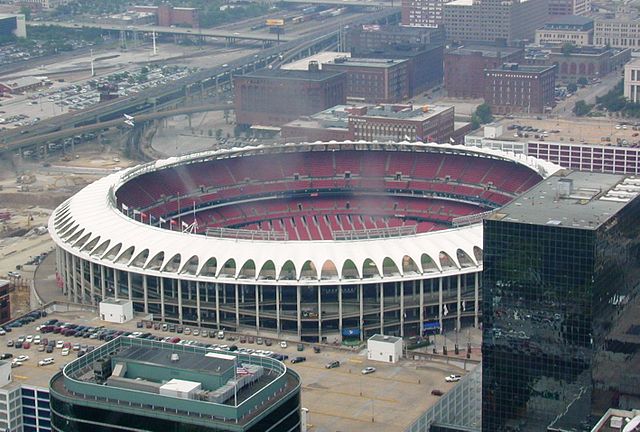Cash-strapped cities around the country have two things in common: one, they are slashing pension costs by scaling back benefits. Two, they are spending tens of millions of dollars on building and subsidizing sports stadiums. David Sirota has more on this interesting juxtaposition:
- In Chicago, Mayor Rahm Emanuel recently passed a $55 million cut to municipal workers’ pensions. At the same time, he has promoted a plan to spend $55 million of taxpayer money on a hotel project that is part of a larger stadium redevelopment plan for Depaul University.
- In Miami, Bloomberg News reports that the city “approved a $19 million subsidy for the professional basketball arena” and then six weeks later “began considering a plan to cut as many as 700 (librarian) positions, including a fifth of the library staff and more than 300 police.”
- In Arizona, the Phoenix Business Journal reports that regional governments in that state have spent $1.5 billion “on sports stadiums, arenas and pro teams” since the mid-1990s. At the same time, legislators are considering proposals to cut public pension benefits, while voters in Phoenix may face a pension-cutting ballot initiative in November.
- In Jacksonville, Florida, officials have not fully funded the pension system leading to a recent credit downgrade by Moody’s. At the same time, city officials just approved a $63 million plan to upgrade EverBank Field.
- In New Jersey, Gov. Chris Christie is trying to block a planned $2.4 billion payment to the pension system, at the same time his administration has spent a record $4 billion on economic development subsidies and tax breaks to corporations. That includes an $82 million subsidy for the construction of a practice facility for the Philadelphia 76ers
- In Louisville, Kentucky, up to $265 million in state and local tax revenues were used to finance the construction of the KFC Yum! Center, which opened in 2010. Only a few years later, Kentucky legislators enacted major cuts to the state’s pension system.
Is there an economic basis for these decisions? Sports stadiums are typically considered an economic boon for the long-term business they bring to certain areas, not to mention the jobs created during construction. But a few studies negate the notion that stadiums are economically sound investments for cities. More from David Sirota:
The officials promoting these twin policies argue that boosting stadium development effectively promotes broad economic growth. But many calculations rely on controversial and dubious assumptions that have been widely challenged.
A landmark 1997 Brookings Institution study by sports economist Andrew Zimbalist concluded that “a new sports facility has an extremely small (perhaps even negative) effect on overall economic activity and employment” and that few facilities “have earned anything approaching a reasonable return on investment” for taxpayers.
That finding was confirmed by University of Maryland and University of Alberta researchers, whose 2008 review of major academic research found that “sports subsidies cannot be justified on the grounds of local economic development.” In addition, a 2012 Bloomberg News analysis found that taxpayers have lost $4 billion on such subsidies since the mid-1980s.
At the same time, cuts to pension contributions are rarely described by public officials as negative for local economic growth, though economic data suggests otherwise. An analysis by the Washington, D.C.-based National Institute on Retirement Security notes that spending resulting from pension payments had “a total economic impact of more than $941.2 billion” and “supported more than 6.1 million American jobs” in 2012.
The timing is particularly bad in Detroit; the day voters approved a measure to cut their pensions was incidentally the same day the Detroit Red Wings unveiled their plan for a new, taxpayer-funded stadium.
